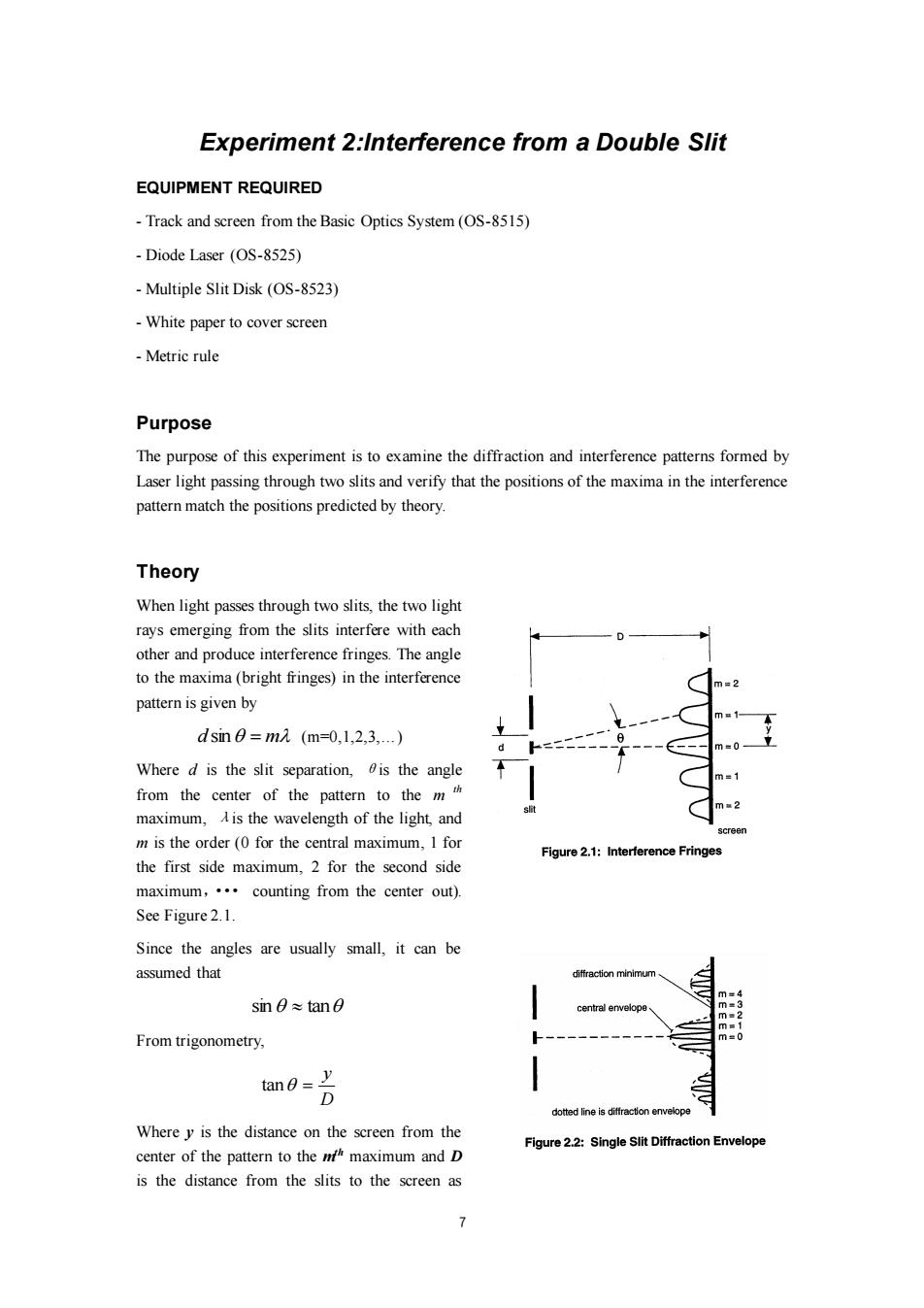正在加载图片...

Experiment 2:Interference from a Double Slit EQUIPMENT REQUIRED -Track and screen from the Basic Optics System(OS-8515) Diode Laser (OS-8525) Multiple Slit Disk (OS-8523) -White paper to cover screen -Metric rule Purpose The purpose of this experiment is to examine the diffraction and interference patterns formed by Laser light passing through two slits and verify that the positions of the maxima in the interference pattern match the positions predicted by theory. Theory When light passes through two slits,the two light rays emerging from the slits interfere with each other and produce interference fringes.The angle to the maxima(bright fringes)in the interference pattern is given by dsin0=m2(m=0,1,2,3.) Where d is the slit separation,is the angle from the center of the pattern to the mh maximum,A is the wavelength of the light,and m is the order (0 for the central maximum,1 for Figure 2.1:Interference Fringes the first side maximum,2 for the second side maximum,··counting from the center out)). See Figure 2.1. Since the angles are usually small,it can be assumed that diffraction minimum m4 sin0≈tan0 central envelope m=3 m=2 m=1 From trigonometry, m=0 tan0s D dotted line is diffraction envelope Where y is the distance on the screen from the Figure 2.2:Single Slit Diffraction Envelope center of the pattern to the nh maximum and D is the distance from the slits to the screen as >7 Experiment 2:Interference from a Double Slit EQUIPMENT REQUIRED - Track and screen from the Basic Optics System (OS-8515) - Diode Laser (OS-8525) - Multiple Slit Disk (OS-8523) - White paper to cover screen - Metric rule Purpose The purpose of this experiment is to examine the diffraction and interference patterns formed by Laser light passing through two slits and verify that the positions of the maxima in the interference pattern match the positions predicted by theory. Theory When light passes through two slits, the two light rays emerging from the slits interfere with each other and produce interference fringes. The angle to the maxima (bright fringes) in the interference pattern is given by d sin = m (m=0,1,2,3,…) Where d is the slit separation, θis the angle from the center of the pattern to the m th maximum, λis the wavelength of the light, and m is the order (0 for the central maximum, 1 for the first side maximum, 2 for the second side maximum,··· counting from the center out). See Figure 2.1. Since the angles are usually small, it can be assumed that sin tan From trigonometry, D y tan = Where y is the distance on the screen from the center of the pattern to the mth maximum and D is the distance from the slits to the screen as